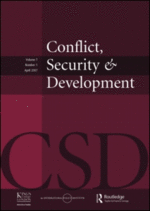Federations promise to provide autonomous, representative governance that is flexible enough to overcome potential internal conflict resulting from the dual stresses of governing diverse populations and power overreach. India is the world's biggest federation but also hosts the most violent revolution in modern history against a federal state. Since 2004, 150,000 people have been killed or displaced in the war between the Communist Party of India-Maoist and India's government. Conflict management efforts led not to resolution but catastrophe across Andhra Pradesh, Chhattisgarh and Jharkhand as state responses contradicted each other and the centre's efforts. The differences illustrated how institutional mechanisms of decentralisation create, sustain and otherwise alter internal revolutionary conflicts that cross subunit boundaries. Three unique characteristics come into play when federal governments tackle revolutionary conflict: picking from subunit actions like policy buffets, exacerbation of state-subunit fissures and empowerment of local elites who put political self-interest above conflict resolution.
Miklian, Jason (2011) Revolutionary Conflict in Federations: The Indian Case, Conflict, Security and Development 11 (1): 25–53.







